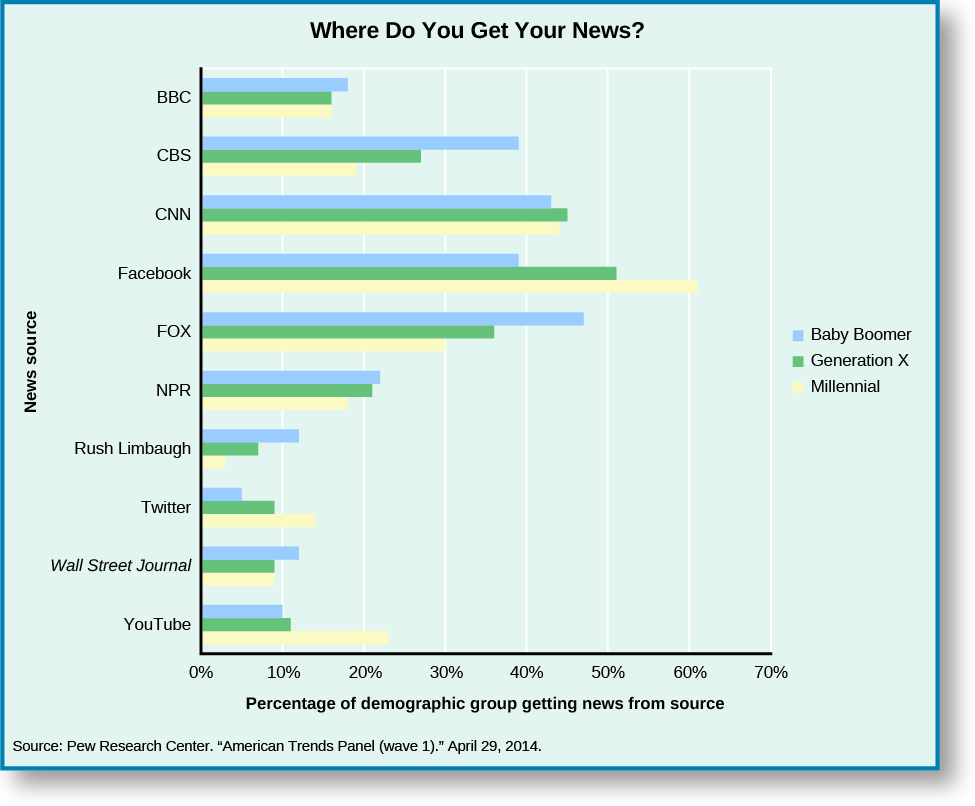| << Chapter < Page | Chapter >> Page > |
Each form of media has its own complexities and is used by different demographics. Millennials (currently aged 18–33) are more likely to get news and information from social media, such as YouTube, Twitter, and Facebook, while baby boomers (currently aged 50–68) are most likely to get their news from television, either national broadcasts or local news ( [link] ).

Television alone offers viewers a variety of formats. Programming may be scripted, like dramas or comedies. It may be unscripted, like game shows or reality programs, or informative, such as news programming. Although most programs are created by a television production company, national networks—like CBS or NBC—purchase the rights to programs they distribute to local stations across the United States. Most local stations are affiliated with a national network corporation, and they broadcast national network programming to their local viewers.
Before the existence of cable and fiber optics, networks needed to own local affiliates to have access to the local station’s transmission towers. Towers have a limited radius, so each network needed an affiliate in each major city to reach viewers. While cable technology has lessened networks’ dependence on aerial signals, some viewers still use antennas and receivers to view programming broadcast from local towers.
Affiliates, by agreement with the networks, give priority to network news and other programming chosen by the affiliate’s national media corporation. Local affiliate stations are told when to air programs or commercials, and they diverge only to inform the public about a local or national emergency. For example, ABC affiliates broadcast the popular television show Once Upon a Time at a specific time on a specific day. Should a fire threaten homes and businesses in a local area, the affiliate might preempt it to update citizens on the fire’s dangers and return to regularly scheduled programming after the danger has ended.
Most affiliate stations will show local news before and after network programming to inform local viewers of events and issues. Network news has a national focus on politics, international events, the economy, and more. Local news, on the other hand, is likely to focus on matters close to home, such as regional business, crime, sports, and weather.
Cable programming offers national networks a second method to directly reach local viewers. As the name implies, cable stations transmit programming directly to a local cable company hub, which then sends the signals to homes through coaxial or fiber optic cables. Because cable does not broadcast programming through the airwaves, cable networks can operate across the nation directly without local affiliates. Instead they purchase broadcasting rights for the cable stations they believe their viewers want. For this reason, cable networks often specialize in different types of programming.

Notification Switch
Would you like to follow the 'American government' conversation and receive update notifications?